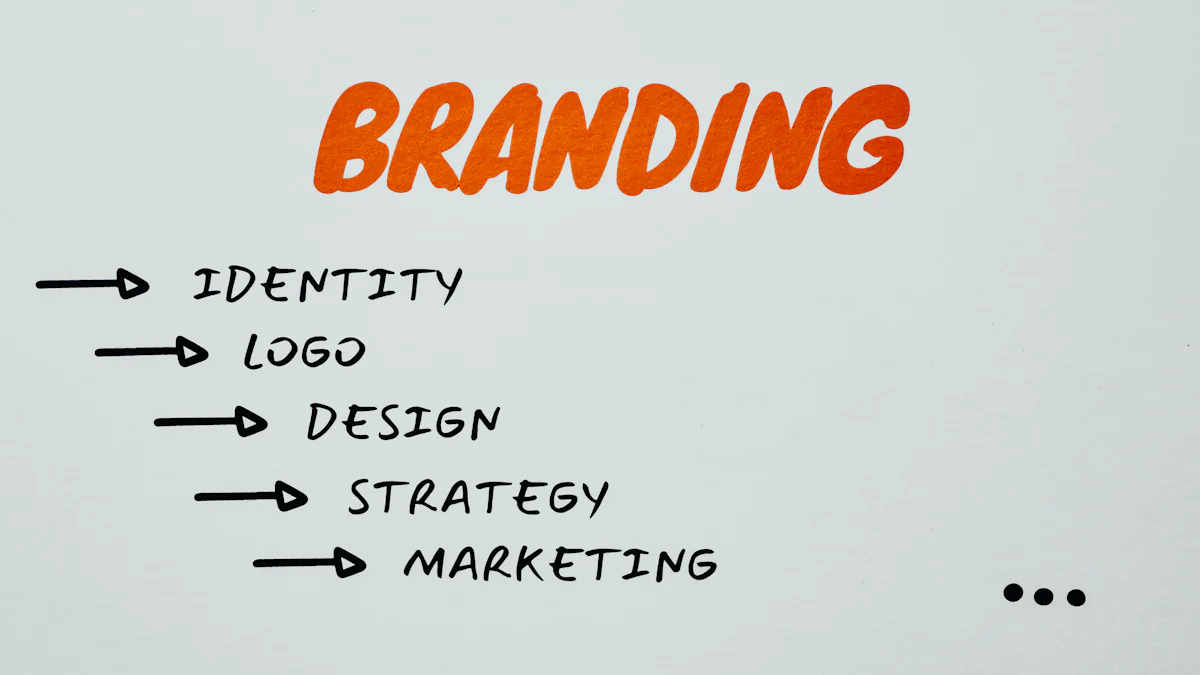Top Digital Marketing Trends Driving Entrepreneurship in 2025

Digital marketing is no longer just a tool; it’s the backbone of business success in 2025. With the global digital marketing industry growing at a CAGR of 13.9%, staying ahead of emerging trends is vital. Consumers now demand personalized experiences, pushing businesses to innovate. From AI-driven insights to video content dominating marketing and branding platforms, the impact of digital marketing development on entrepreneurship is undeniable. These innovations don’t just enhance customer engagement—they redefine how you connect, grow, and thrive in a competitive market. Are you ready to embrace this transformation?
The Role of AI in Digital Marketing

Personalization and Predictive Analytics
AI in digital marketing is revolutionizing how you connect with your audience. Predictive analytics lets you anticipate customer needs by analyzing past behaviors. Imagine knowing what your customers want before they do! This foresight helps you adjust campaigns, manage inventory, and deliver targeted messages. For example, brands like Yves Rocher have seen an 11x increase in purchases through real-time product recommendations.
AI tools also analyze vast amounts of data to create highly personalized experiences. They track individual preferences and behaviors, allowing you to tailor content and offers. Did you know 67% of customers value relevant product recommendations when shopping? By leveraging AI, you can meet these expectations and boost customer loyalty.
Automation for Marketing Efficiency
Automation is a game-changer for your digital marketing strategy. AI takes over repetitive tasks, saving you time and reducing errors. Tools like Jasper AI and Reply.io’s AI Sales Email Assistant streamline content creation and email replies, letting you focus on strategy.
AI-powered chatbots are another must-have. They provide 24/7 support, answer queries, and even learn from interactions to improve over time. This not only enhances customer satisfaction but also keeps your business running smoothly around the clock. Plus, AI can optimize ad bids in real-time, ensuring your campaigns stay efficient and cost-effective.
Tools and Strategies for Entrepreneurs
As an entrepreneur, you need the right tools to stay ahead of digital marketing trends. AI tools like Surfer SEO help you optimize content, while Crayo creates engaging short-form videos. Want to monitor your brand’s online presence? Brand24 has you covered.
To integrate AI into your digital marketing strategy, start by using predictive analytics to forecast customer behavior. Segment your audience with AI tools and create personalized content for each group. Don’t forget to build a seamless customer experience by anticipating pain points and addressing them proactively. These strategies ensure your success in a competitive market.
Pro Tip: Fast-growing companies generate 40% more revenue from hyper-personalization than slower-growing competitors.
Social Media and Emerging Trends
Niche Platforms and Short-Form Content
Social media marketing is evolving rapidly, and niche platforms are taking center stage. While giants like Facebook and Instagram remain relevant, emerging platforms are creating unique opportunities for entrepreneurs. You should keep an eye on platforms like Instagram Threads, Lemon8, Kick, Bluesky, and Damus. These platforms cater to specific audiences, making them perfect for targeted campaigns. For instance, Gowalla and RTRO focus on location-based interactions, which can help you connect with local communities.
Short-form content continues to dominate. Platforms like TikTok, Instagram Reels, and YouTube Shorts are leading this trend. They’re not just about entertainment anymore. TikTok, for example, is expanding into niches like Business and Finance, giving you a chance to showcase your expertise. Slightly longer short-form videos, around 30-60 seconds, are gaining traction too. These formats let you deliver engaging, concise messages that resonate with your audience.
Influencer Marketing in 2025
Influencer marketing is no longer just a buzzword—it’s a cornerstone of social media marketing. By 2025, it’s expected to replace traditional brand storytelling. Consumers trust influencers more than direct brand messaging, with 69% relying on recommendations from influencers or friends. However, people are becoming skeptical of paid promotions. To succeed, you’ll need to focus on authentic partnerships.
Oversaturation has diluted the impact of influencer marketing, but this creates an opportunity for innovation. Micro and nano-influencers, with smaller but highly engaged audiences, are becoming more effective. Collaborating with them can help you build trust and credibility.
Real-Time Engagement Strategies
Real-time marketing analytics and engagement are game-changers for social media marketing. To stand out, you need to interact with your audience in the moment. Start by engaging with others’ content before posting your own. This boosts your visibility and encourages reciprocity.
Consistency is key. Regular posting keeps your audience engaged and ensures your content stays visible. Balance your posts between business and social content to avoid overwhelming your followers with sales pitches. Interactive content like polls and quizzes can spark conversations and keep your audience involved.
Live videos are another powerful tool. They let you connect with your audience in real time, creating a sense of community. Whether it’s a product launch or a Q&A session, live videos make your brand feel approachable and authentic.
Pro Tip: Use real-time marketing analytics to track engagement during live sessions. This helps you refine your strategy and maximize success.
Video and Interactive Content in Digital Marketing

Shoppable Videos and E-Commerce Integration
Shoppable videos are transforming how you approach e-commerce. These videos let your customers shop directly while watching, creating a seamless buying experience. Imagine a runway video where viewers can click on an outfit they love and add it to their cart instantly. Brands like Love Shack Fancy have nailed this with their shoppable runway videos. They included interactive features like size selection and cart buttons, making the shopping process effortless and fun.
Albertsons also used shoppable videos to inspire customers rather than just sell products. Their Firework Story Block Carousel created an immersive retail experience that encouraged exploration. These examples show how shoppable videos can boost engagement and sales while offering a personalized e-commerce experience.
If you’re looking to adopt video marketing strategies, start by creating short, engaging videos with clear calls to action. Highlight your products in action and make it easy for viewers to shop without leaving the video.
AR/VR for Immersive Customer Experiences
Augmented reality (AR) and virtual reality (VR) are no longer futuristic—they’re here, and they’re changing the game. AR apps let your customers see how products work in real time. For example, Ikea’s Place app allows users to visualize furniture in their homes before buying. BMW’s i Visualizer app takes it a step further by enabling real-time car customization.
VR creates fully immersive environments. Imagine letting your customers explore a virtual showroom from the comfort of their homes. This technology mimics the in-store experience and helps them make confident decisions. It’s especially useful in industries like tourism, where VR lets users virtually explore hotels or destinations before booking.
By integrating AR and VR into your video marketing strategies, you can offer unique, engaging experiences that set you apart.
Gamification and Interactive Storytelling
Gamification and interactive storytelling are two trends you can’t ignore. Gamification makes your content more enjoyable and rewarding. Think of loyalty programs that feel like games, where customers earn points or badges. This approach increases motivation and keeps users coming back.
Interactive storytelling takes engagement to the next level. It allows your audience to explore dynamic narratives, creating a personal connection with your brand. AR and VR make this even more exciting. For instance, brands now use AR-based games and VR challenges to entertain users while promoting products.
These strategies don’t just entertain—they build loyalty. When you make your audience feel involved, they’re more likely to stick around. So, whether it’s through gamified experiences or immersive stories, you can create deeper connections with your customers.
Pro Tip: Interactive content converts buyers 70% of the time, nearly double the rate of static content.
Data-Driven Strategies for Entrepreneurs
Leveraging Analytics for Customer Insights
Analytics is your secret weapon for understanding your audience. By diving into customer data, you can uncover what they want, how they behave, and what drives their decisions. This helps you craft marketing strategies that hit the mark. For instance, analytics lets you target the right audience with the perfect message at the ideal time. It’s like having a crystal ball for your business.
You can also use analytics to personalize experiences. By analyzing preferences and behaviors, you can tailor product recommendations or services to match individual needs. Predictive analytics takes it a step further by helping you anticipate trends and customer needs. This proactive approach boosts customer engagement and keeps them coming back for more.
Programmatic Advertising and Precision Targeting
Programmatic advertising is a game-changer in data-driven marketing. It uses demographic, psychographic, and behavioral data to target ads with laser precision. This means your ads reach the people most likely to convert, saving you money and increasing your success rate.
With programmatic advertising, you can also tap into niche segments that traditional methods might miss. AI-powered algorithms analyze real-time data to optimize campaigns and improve ad relevance. This dynamic approach ensures your message resonates with your audience, driving higher engagement and conversions.
Optimization Through Testing and Refinement
Testing and refining your campaigns is essential for success. A/B testing is a simple yet powerful tool. It helps you figure out which version of an ad or webpage performs better. By continuously testing, you can fine-tune your strategies to maximize results.
Feedback loops are another valuable tool. Regularly gather insights from your audience through surveys or polls. Use this data to adjust your campaigns and address customer pain points. Establishing clear KPIs also helps you measure performance and refine your approach. These steps ensure your digital marketing efforts stay effective and aligned with your goals.
Pro Tip: Data-driven marketing isn’t just about numbers. It’s about turning insights into action to create meaningful customer connections.
Personalization and Customer Experience
Dynamic Content for Tailored Messaging
Dynamic content is a powerful way to make your messaging feel personal and relevant. It adapts to your audience based on their preferences, behaviors, or location. For example, e-commerce sites often display personalized product recommendations, while homepages can show location-specific messages. You’ve probably seen emails that include your name or even weather-based suggestions—like sunny-day tips for one person and rainy-day ideas for another. These small touches make a big difference in how your audience connects with your brand.
By using dynamic content, you can create tailored experiences that resonate with your customers. Behavior-based content, such as recommending products based on past purchases, keeps your messaging relevant and engaging. This approach not only strengthens your relationship with customers but also sets you apart from competitors. When you treat customers as individuals, they’re more likely to stay loyal and choose your brand over others.
AI-Driven Personalization for Customer Retention
AI takes personalization to the next level by analyzing data and predicting what your customers want. Companies like Amazon and Netflix are masters of this. Amazon uses AI to recommend products, while Netflix suggests shows based on your viewing history. These strategies keep customers engaged and coming back for more.
Did you know that increasing customer retention rates by just 5% can boost profits by 25% to 95%? AI-driven personalization helps you achieve this by delivering the right offers at the right time. Starbucks, for instance, uses loyalty program data to send personalized offers, making customers feel valued. When you use AI to understand your audience better, you can create experiences that keep them loyal and satisfied.
Balancing Personalization with Privacy Concerns
While personalization is essential, respecting privacy is just as important. Customers want to know how their data is being used. Transparency builds trust, so always communicate clearly about data collection and usage. Obtaining consent is crucial, especially with privacy laws like GDPR and CCPA in place.
The decline of third-party cookies has made personalization more challenging, but it’s also an opportunity to innovate. Focus on strategies like privacy-by-design and data minimization. Use nonpersonal data to create relevant content without compromising privacy. By balancing personalization with privacy concerns, you can build trust and deliver a great customer experience.
Pro Tip: Ethical data practices, like collecting only what’s necessary and securing it properly, show your customers that you value their trust.
Digital marketing trends have reshaped entrepreneurship, offering tools to build brand awareness and grow quickly. Startups now rely on SEO to boost visibility, social media to connect with audiences, and email marketing to turn leads into loyal customers. These strategies help you stand out and achieve long-term success.
To thrive in this evolving landscape, embrace innovation. Adapt to changes, like shifting social media algorithms, and stay creative. Viral campaigns often succeed because of bold, fresh ideas. By staying flexible and thinking outside the box, you can create standout marketing efforts that resonate with your audience.
The future of entrepreneurship belongs to those who adapt, innovate, and connect with their customers. Are you ready to lead the way?
FAQ
What is the most important digital marketing trend for entrepreneurs in 2025?
AI-driven personalization stands out. It helps you deliver tailored experiences that boost customer loyalty and retention. By using tools like predictive analytics, you can anticipate customer needs and create campaigns that resonate.
How can small businesses compete with larger brands in digital marketing?
Focus on niche platforms and micro-influencers. These strategies let you connect with highly engaged audiences. Use short-form content and interactive storytelling to stand out without needing a massive budget.
Are shoppable videos worth the investment?
Absolutely! Shoppable videos simplify the buying process. They let customers shop directly while watching, increasing engagement and sales. Start small by creating short, product-focused videos with clear calls to action.
How do I balance personalization with privacy concerns?
Be transparent about data usage. Always get consent and use ethical practices like data minimization. Focus on first-party data to create personalized experiences without compromising trust.
What’s the best way to start using AR/VR in marketing?
Begin with simple AR tools like virtual try-ons or product visualizers. These offer immediate value to your customers. For VR, consider creating immersive experiences like virtual tours or showrooms to engage your audience.
Pro Tip: Start small and scale as you see results. Test what resonates with your audience before investing heavily.
See Also
The Importance Of Digital Entrepreneurship For 2025 Business Expansion
Exploring The Various Forms Of Digital Entrepreneurship In 2025
Understanding Digital Entrepreneurship And Its Significance In 2025
The Crucial Role Of Technology In 2025 Digital Entrepreneurship
